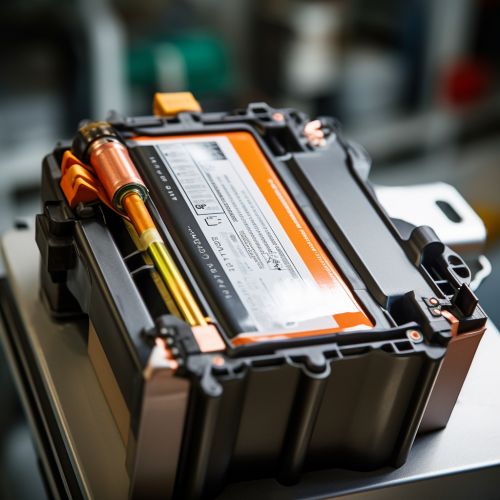Lithium-ion battery
Introduction
A lithium-ion battery or Li-ion battery is a type of rechargeable battery that uses lithium ions as a key component of its electrochemistry. Lithium-ion batteries have a high energy density, no memory effect (other than LFP cells) and low self-discharge. They can also be dangerous if mistreated.
History
The history of the lithium-ion battery began in the 1970s, with the initial development of lithium batteries. The first commercial lithium-ion battery was introduced by Sony Corporation in 1991.
Design
The design of a lithium-ion battery involves the assembly of an anode, cathode, separator, and electrolyte. The anode is typically made from carbon, the cathode is a metal oxide, and the electrolyte is a lithium salt in an organic solvent.


Performance
Lithium-ion batteries have a number of performance characteristics that make them the battery of choice for many applications. These include a high energy density, long cycle life, and low self-discharge rate.
Applications
Lithium-ion batteries are used in a wide range of applications, from electric vehicles and portable electronics to grid energy storage and aerospace applications.
Safety
While lithium-ion batteries are generally safe and unlikely to fail, when they do, the results can be severe. As such, a number of safety features are built into lithium-ion batteries, including venting mechanisms and thermal fuses.
Recycling
The recycling of lithium-ion batteries is an important aspect of their lifecycle. It involves the recovery of valuable materials, such as lithium, cobalt, and nickel, and the safe disposal of other materials.
Future Developments
There are several areas of research and development in the field of lithium-ion batteries, including the development of solid-state batteries, the use of alternative materials, and improvements in safety and performance.
